- 1

Cinco pasos para lanzar tu proyecto web con estructura y seguridad
01:44 - 2
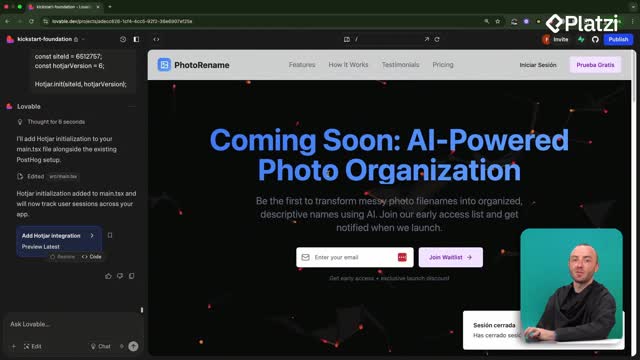
Edición directa de código en Lovable con modo desarrollador
06:41 - 3
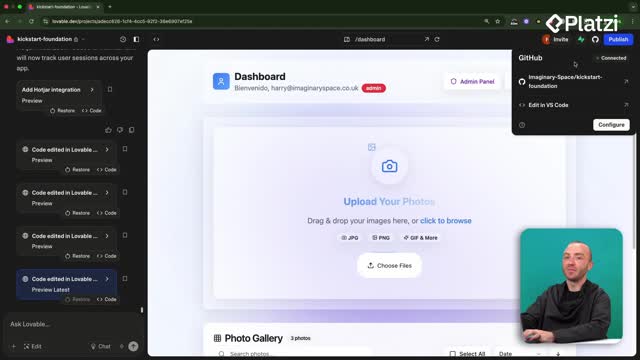
Cómo conectar GitHub a Lovable y sincronizar cambios de código
04:52 - 4
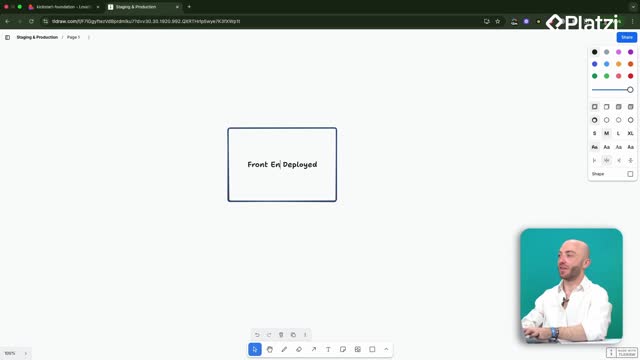
Configuración de entornos de staging y producción con GitHub
06:11 - 5
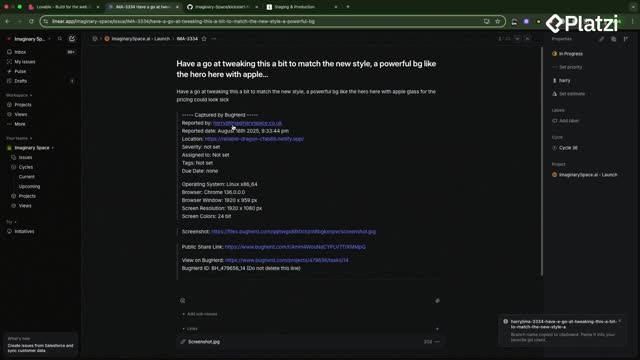
GitHub workflow for deploying features safely to production
13:43 quiz de Flujo de Desarrollo Profesional
Caché local de datos de usuario para aplicaciones más rápidas
Clase 8 de 19 • Curso de Desarrollo Avanzado con Lovable
Contenido del curso
- 6
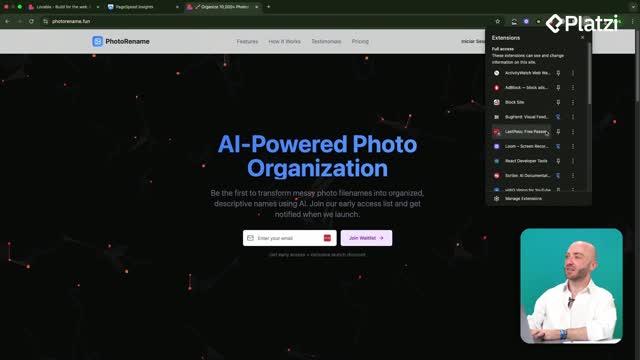
Optimización de velocidad con Google Page Speed Insights
12:18 - 7
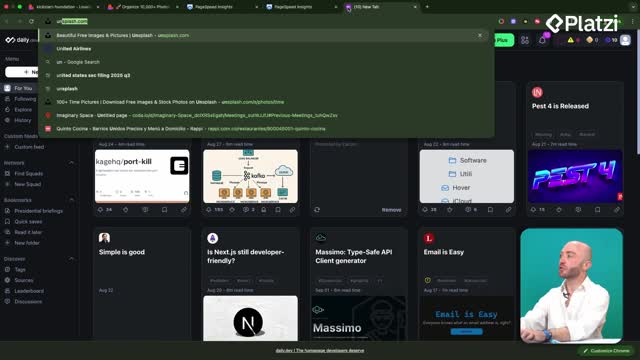
Optimización de imágenes web con Squoosh y lazy loading
08:30 - 8
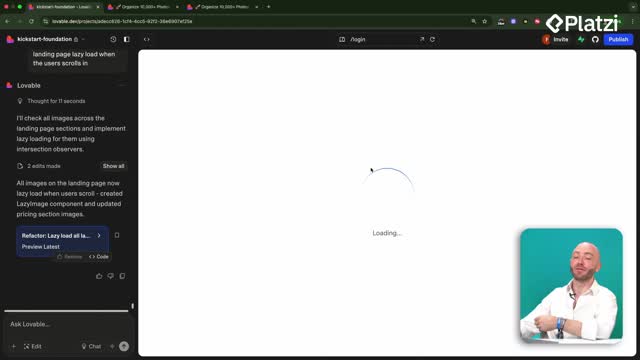
Caché local de datos de usuario para aplicaciones más rápidas
05:28 - 9
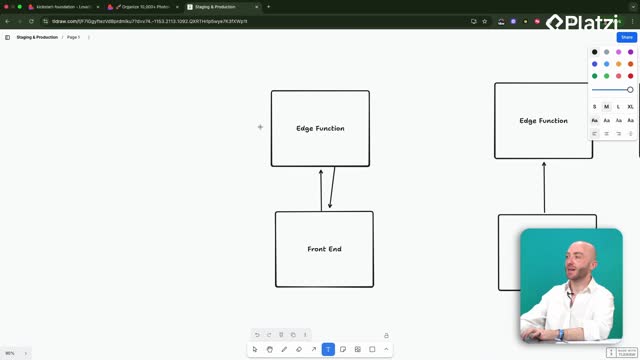
Background jobs con Supabase Edge functions para procesar imágenes
08:02 - 10

TanStack Table para optimizar rendimiento en React
05:14 quiz de Optimización del Rendimiento
Faster load times, smoother navigation, and fewer server calls: learn how caching user data locally transforms a photo gallery into a snappy, reliable experience. This guide explains the approach, the benefits, and the troubleshooting mindset shown while implementing local storage and optimistic updates.
Why caching user data locally speeds up your app?
Caching reduces repeated fetching and accelerates rendering. Instead of pulling photos on every refresh, user data persists in the browser, so the UI can render instantly and only sync when new data arrives.
- Cache: store data on the client to avoid repetitive requests.
- Local storage: the browser’s persistent store so data survives page reloads.
- Server calls: network requests that slow down the UI and cost resources.
- Scaling: with thousands of users, repeated fetching “can become a problem pretty quickly.” Reducing calls helps stability and cost.
What is local storage and how does it help offline support?
Local storage keeps photos, data, and thumbnails/previews available even without a connection. That means the gallery can render immediately and remain usable offline.
- Thumbnails/previews: lightweight images that appear fast and enable visibility offline.
- Offline support: users “will still be able to view their data even if their connection goes.”
- Preloaded images: assets are ready on refresh, so the page feels instant.
How do optimistic updates improve UI responsiveness?
With optimistic updates, the UI updates first and reconciles with the database later. The result is a snappier interface where users see changes immediately while background sync keeps data accurate.
- Optimistic updates: update the UI immediately, then confirm or adjust after the server response.
- Smoother navigation: faster transitions across dashboard components when data is already in place.
How to implement local caching without bloated components?
The approach follows a small client-side system that caches data and keeps it fresh when database updates arrive. The goal: faster page loading without overcomplicating components.
What plan did Lovable propose for photo gallery caching?
The plan identified that the gallery fetched photos on every reload. The solution: use the existing front-end caching tech for the gallery, persist items in local storage, show thumbnails/previews, and apply optimistic UI updates.
- Cache photo data locally for instant renders.
- Show previews for speed and offline visibility.
- Sync changes from the database as updates arrive.
How to avoid API overuse and server costs?
By serving data from the client first, API calls drop, reducing server resource usage and potential costs. Only deltas need to sync, not the whole gallery on every visit.
- Fewer repeated fetches per refresh.
- Better experience when users have many photos.
- Lower load on back-end services.
How to troubleshoot issues when implementing caching?
Expect hiccups. The process showed how to use chat mode, read logs, and iterate prompts to isolate problems and fix them without rushing edits.
Why use chat mode and logs to do detective work?
When changes “mess up” (e.g., zero photos appear), share what you see and what you expected. That detective work helps tools review the database, code, and structure before editing, avoiding a “rabbit hole.”
- State the issue clearly.
- Compare expected vs. actual behavior.
- Let the tool analyze code and data first.
- Implement the suggested plan and re-test.
What outcome proves caching is working?
After fixes, a refresh shows images already there and loading faster because they’re saved locally. The gallery preloads, giving a better experience—especially with large libraries.
- “When I refresh the page… the images are already here and are loading faster.”
- Users don’t wait for a huge gallery to load.
- Data remains accessible even offline.
Key vocabulary (with context examples): - Photo gallery: the component that lists user images and thumbnails. - Cache / caching: storing data in the browser for instant access upon refresh. - Local storage: persistent client storage used to keep photos and metadata. - Optimistic updates: immediate UI changes while syncing with the database later. - Thumbnails/previews: smaller images that render quickly and help offline viewing. - Server calls / API calls: requests that are reduced by serving cached data first. - Logs: diagnostics you read to identify and fix issues. - Chat mode: interactive help to plan, analyze, and correct issues before coding.
Have a question or want to share how you’d apply local caching to your gallery? Add a comment and keep the conversation going.